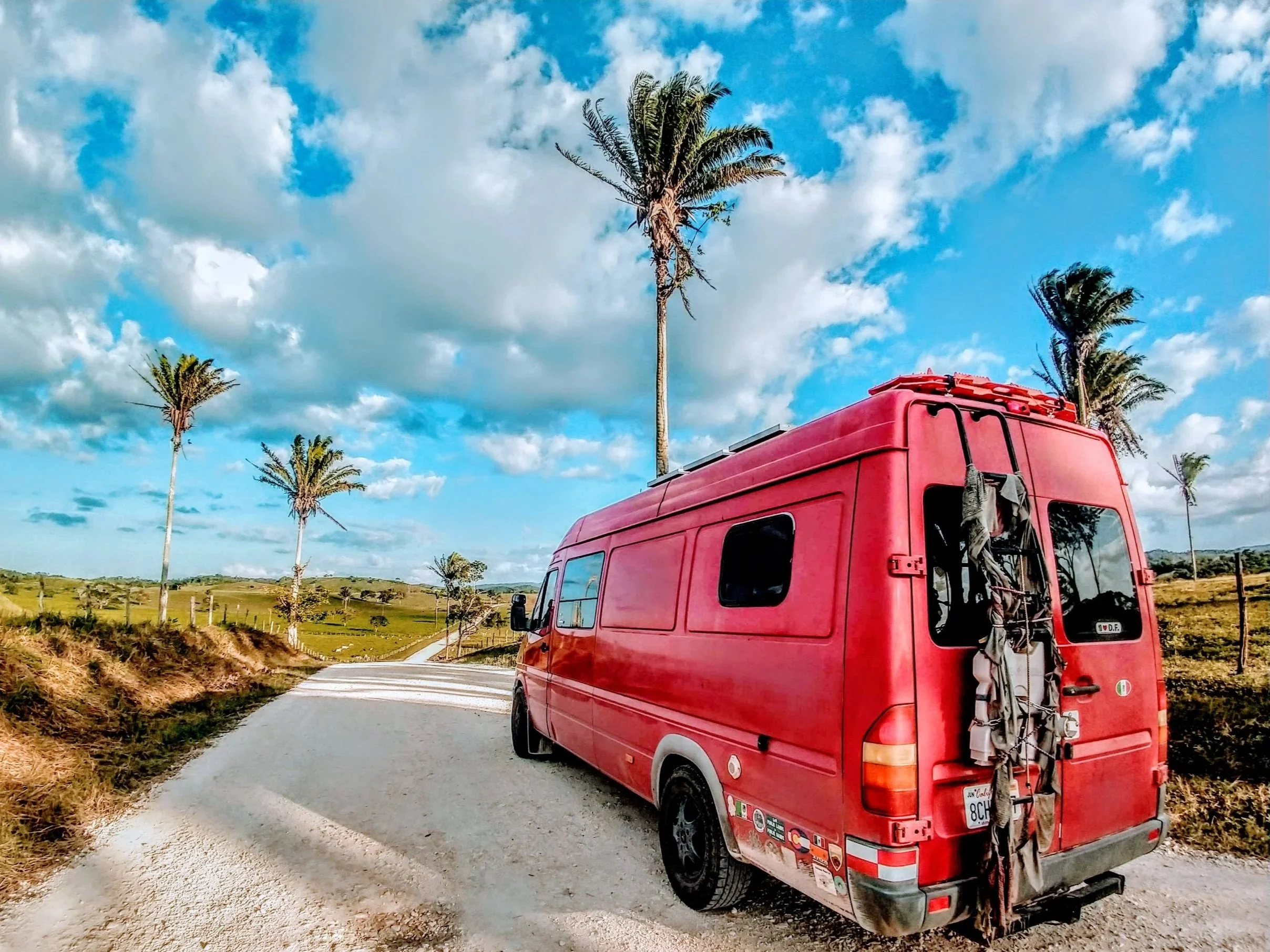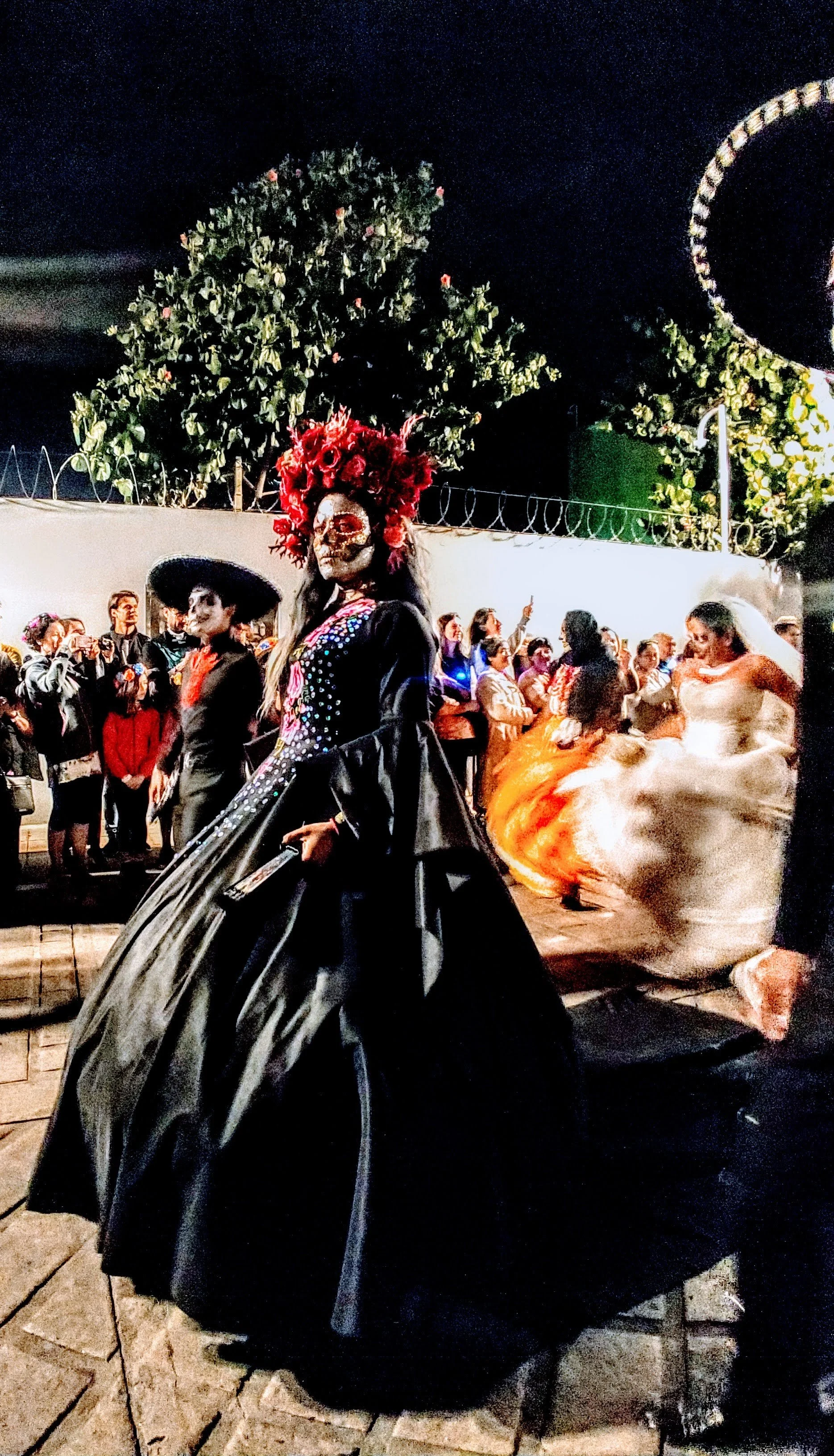Día de Muertos and the Art of Remembering
Marigolds, Mezcal, and Music…If you’ve ever been to Oaxaca during Día de Muertos, you’ll know what I’m talking about.
In 2019, my wife, my dog, and I were traveling through Mexico in our trusty van, affectionately named La Soñadora (“The Dreamer”). We were following our dream of retiring early and often, recording conversations with people we met who were doing fun and meaningful things with their lives, and ultimately making friends.
We cemented a few of those friendships during the beautiful Día de Muertos celebration in the Panteón San Miguel, Oaxaca’s most culturally significant cemetery.
A Night in the Panteón
We were invited to visit and pay respects to the aunt of our host, and we could not pass up the opportunity. The family led us to the cemetery after sunset. The smell of burning copal made the air sing with its piney bouquet. Shadows flung by candlelight danced across the fractured patina of the cemetery walls, while intricate patterns of vibrant marigolds wove a mandala of soft geometry in every direction. To say we were transfixed is to undersell the experience.
Following our guides in darkness illuminated solely by candles and cell phone flashlights, we navigated the maze of ancient graves to the family plot. About a dozen relatives had been buried there. Several women had been cleaning and decorating the graves earlier in the day and had returned for the evening’s celebration. As cumbia softly shuffled from a small speaker, I noticed the offerings — bottles of beer and mezcal, trinkets, and photos of the departed — propped against the graves.
We sat with the family, drank the finest mezcal I’ve ever tasted, and listened to stories of those who had passed on. Some were funny, some wildly tragic, others tender, and a few were the kind only the immediate family could appreciate. I felt beyond fortunate to witness such a thing and recognized a swell of jealousy that my own culture lacks this visceral connection to the dead.
Bridging the Gap Between Life and Legacy
As I write this now, six years later, I recognize that I’m doing my part, professionally at least, to bridge that gap. What we’re building at Sound Legacy is, at its heart, a modern form of celebrating the living and the dead through storytelling. It is something like a digital ofrenda.
If the human experience is built upon a growing collection of memories, why not do what we can to house those memories in a place of reverence? For sure, the act of sharing our memories with others is to relive them. But by doing so, we breathe a bit of life back into the dead, if only for a moment. We remember what we loved about them, what drove us mad, and what we learned from our time with them.
Introducing Sound Legacy’s Digital Memorials
This year, we’re expanding that mission with something new: photo and video slideshows for departed loved ones, beautifully produced digital memorial tributes that bring your family’s stories to life.
These tributes are more than memorial videos. They are modern ofrendas, portable altars made of sound, image, and story. They let families celebrate life after death and preserve legacies that can be revisited on birthdays, anniversaries, or any day you need to hear a familiar voice again.
At Sound Legacy, we believe that memory deserves a home. Whether that home is a photo album, a podcast, or a funeral slideshow with music, what matters most is that we keep telling the stories that make us who we are.
Remembering, Together
My friends in Oaxaca taught me that while death is a sad reality, being dead forever doesn’t have to be a drag forever. Like marigolds, mezcal, and music - cemeteries, altars, and stories are not only for the dead; they are for the living.
And so, this Día de Muertos, I’ll light a candle and press play on a Sound Legacy slideshow that brings my uncle’s voice back to me. It’s my own kind of altar, made of sound waves and love.
Because remembrance isn’t simply about looking back.
It’s about keeping someone close, one story at a time.






